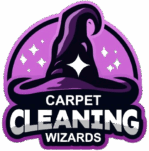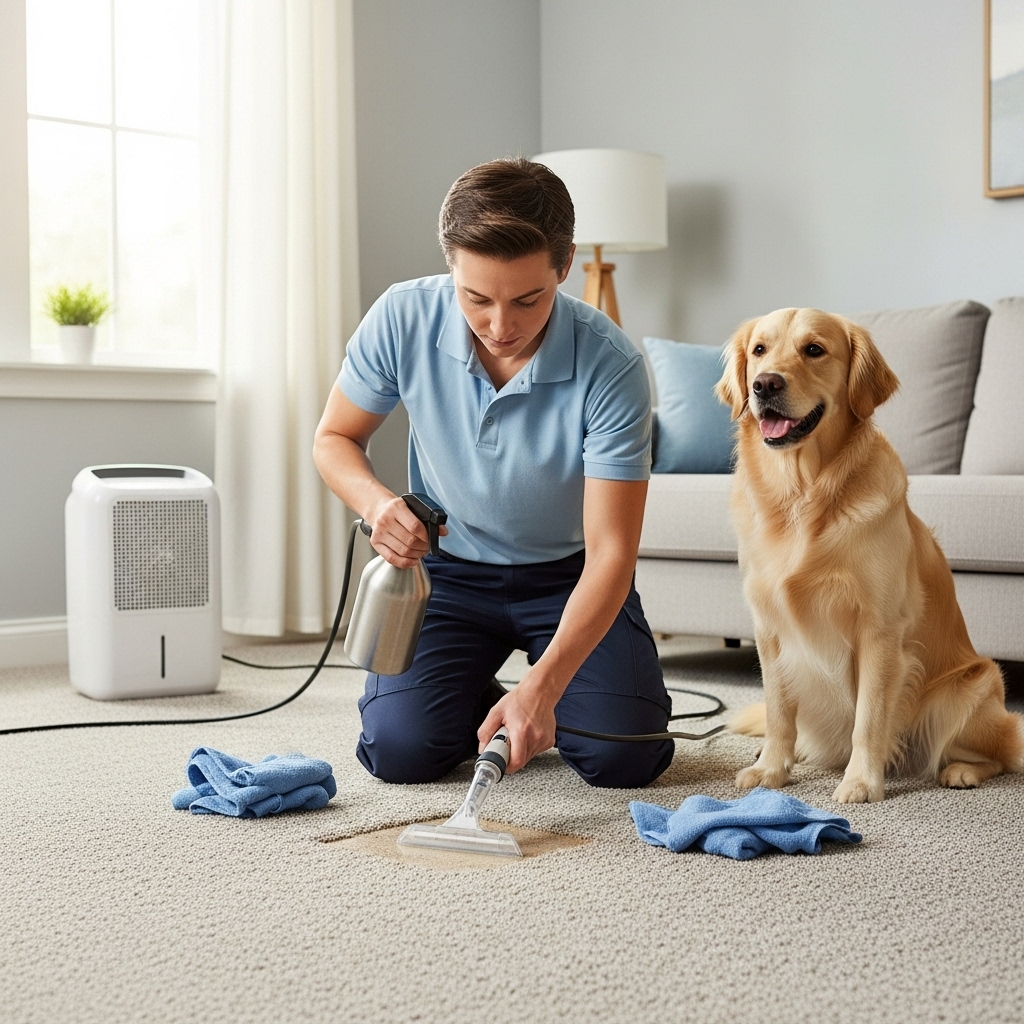Pets bring joy, energy, and companionship to homes across Elizabeth, New Jersey—but they also bring the occasional accident. From a puppy’s training phase to an older cat’s surprise “miss,” pet stains challenge carpets like few other household mishaps. The issue isn’t just cosmetic: odors linger, bacteria flourish, and recurring spots can reappear after a day or two due to wicking from the padding. If your floors have seen better days, professional help can restore freshness and comfort. Begin by exploring our specialized pet stain removal carpet cleaning services to understand how a targeted approach eliminates stains and neutralizes odors for good.
Pet accidents are chemically complex. Urine, for instance, starts as an acidic solution that can alter carpet dye stability; as it dries, it becomes alkaline and forms odor-producing crystals. These crystals can continue to release smell whenever humidity rises. The path to true odor removal involves dissolving and extracting those crystals—not simply masking them with fragrance. That’s why a structured process, tailored chemistry, and controlled drying are essential to solving the problem rather than temporarily hiding it.
Why Pet Stains Are Different From Other Spills
Unlike food or beverage spills, pet accidents penetrate deeper and change over time. Liquids soak through carpet into the pad and sometimes the subfloor. If the surface is cleaned without addressing deeper layers, stains and odors seem to “come back.” Textbook spot removal won’t do; you need methods that deal with the full depth of contamination. In severe cases, partial replacement of pad or sealing of subfloor may be recommended, but many households can achieve excellent results through advanced extraction, enzyme treatments, and proper drying.
Hair oils, dander, and tracked litter or soil add another dimension. Even when accidents are rare, these residues can create a persistent “pet” smell if not removed periodically. Professional cleaning resets the baseline, so routine maintenance and grooming are more effective.
The Professional Process for Pet Stain and Odor Removal
Effective remediation follows a careful sequence: detect, treat, extract, and dry. Detection may use moisture meters or UV inspection to map the true extent of contamination. Treatments are selected for the specific issue—enzymes to digest organic residues, oxidizers for discoloration, and neutralizers to balance pH and stop odor release. Deep extraction removes dissolved contaminants from the pile and, with specialized tools, from the pad. Finally, controlled drying prevents wicking and ensures that the odor doesn’t creep back as humidity changes.
This process is adaptable. A single accident in a bedroom requires a different response than repeated incidents in a favorite corner or near a patio door. A good technician tailors the approach to each spot and to household routines, including pet behavior.
Enzymes, Oxidizers, and When to Use Them
Enzymatic solutions excel at breaking down organic matter in urine, feces, and vomit. They work best with adequate dwell time and when not overpowered by harsh disinfectants that can inhibit their action. Oxidizing agents brighten and neutralize stubborn discoloration, but must be used judiciously to protect dyes. Professionals select products based on fiber type—nylon, polyester, olefin, or wool—and test in inconspicuous areas to ensure safety. The balance is key: enough action to remove the problem, not so much that it stresses the carpet.
Sometimes a two-step approach is needed: enzymatic digestion followed by gentle oxidation and thorough rinsing. This sequence tackles both odor sources and the visible stain, yielding a complete solution.
Dealing With Recurring Spots and Wicking
When a spot resurfaces, it’s often due to moisture wicking from the pad as the carpet dries. The answer isn’t stronger chemicals; it’s more effective extraction and controlled drying. Weighted extraction tools and strategic air movement draw contaminants upward and out. When paired with moisture mapping and, if necessary, pad flushing, the recurrence stops. If a subfloor has absorbed contamination, sealing may be recommended to prevent long-term odor release.
Homeowners can support results by keeping foot traffic away from treated areas until dry and running HVAC fans or opening windows to maintain airflow. Patience during drying prevents recontamination and preserves the clean finish.
Training, Behavior, and Prevention
Cleaning addresses the aftermath, but prevention matters too. New puppies benefit from consistent routines and access to appropriate spaces. Older pets may have medical issues; a vet check can rule out infections that lead to increased accidents. Environmental cues—clean litter boxes, accessible exits, and washable pads—reduce the chance of surprises. Positive reinforcement works better than punishment, which can create anxiety and more accidents. Once you’ve eliminated residual odors in the carpet, pets are less likely to return to the same spot.
Consider using temporary barriers or closing doors to previously soiled rooms during retraining. Freshly cleaned carpets should be protected while habits reset.
Special Considerations for Area Rugs
Area rugs can trap pet residues differently from wall-to-wall carpet. Wool, for example, is resilient but sensitive to high pH; silk requires ultra-gentle handling. Many rugs benefit from off-site treatments where immersion cleaning, thorough rinsing, and controlled drying can be performed without risk to surrounding floors. Discuss fiber identification, dye stability tests, and expectations before proceeding. Proper padding under rugs also helps by absorbing minor accidents and preventing dye transfer to hardwood.
Vacuuming both sides of a rug during maintenance removes more hair and dander, lengthening the time between deep cleans and helping control odor.
Protectants and Ongoing Maintenance
After remediation, protective treatments can improve resistance to new accidents. While they won’t make carpet impervious, they buy time to blot and neutralize spills before they set. Regular vacuuming with a HEPA-filtered machine captures dander and hair; periodic professional deep cleaning removes residues that household tools miss. Together, these steps sustain a fresher home and lower the likelihood of stubborn stains forming.
Simple habits like wiping paws at the door, grooming pets regularly, and placing washable runners in high-traffic routes contribute to a consistently clean environment.
When Replacement or Repairs Are the Right Choice
Occasionally, damage is severe: multiple saturated zones, delamination, or permanent dye loss. In these cases, a professional may recommend pad replacement in affected areas, subfloor sealing, or even carpet replacement. Honest assessment saves time and money by focusing efforts where they will work and moving to repairs when they won’t. If replacement is planned, interim cleaning can still reduce odors and make spaces more livable while you select new materials.
For homeowners considering new carpet, ask about pet-friendly fibers and stain-resistant treatments. Pairing the right materials with good habits creates a durable, pet-ready home.
Frequently Asked Questions
Q: Can all pet urine odors be removed? A: Most can, especially when contamination is limited to the carpet and pad. If the subfloor is affected, sealing or partial replacement may be necessary for complete odor control.
Q: Will the smell come back after a few days? A: Proper extraction and drying prevent wicking and odor return. Enzymes break down crystals, and oxidizers neutralize remaining compounds so that humidity changes don’t reactivate smells.
Q: Are treatments safe for pets and children? A: When used correctly, yes. Professionals select low-VOC products and ensure thorough rinsing. Keep pets out of treated areas until fully dry.
Q: How quickly should I act after an accident? A: Blot immediately, avoid scrubbing, and use water sparingly. Call a professional for persistent odors or visible staining to avoid setting the problem.
Q: Can I use store-bought deodorizers? A: Powdered products can add residue and sometimes mask rather than solve odor. Targeted treatments and extraction are more effective for long-term results.
Q: What about old stains? A: Aged stains often respond to enzyme and oxidation sequences, though permanent dye loss may remain. A technician can explain realistic outcomes.
Q: How do I prevent re-soiling? A: Neutralize odors thoroughly so pets aren’t drawn back. Reinforce new habits, maintain litter boxes, and protect high-risk areas with washable mats.
Choosing a Pet-Focused Cleaning Partner
Select a provider experienced with pet issues: moisture mapping, UV detection, pad flushing tools, and odor control expertise. Ask about fiber-safe chemistry, drying strategies, and how they document progress. Clear communication sets expectations and helps you maintain results afterward. For a solution-oriented plan that restores comfort, consider reputable carpet cleaning services that specialize in pet stain and odor removal while protecting your home and family.
The right team treats the cause, not just the symptom—leaving your home genuinely fresh, not perfumed. With a complete approach, your carpets can look and feel like themselves again.
Bring Back Freshness to Your Elizabeth Home
Life with pets should be joyful, not a constant battle with stains and smells. Reclaim that comfort by partnering with specialists who know how to detect, treat, and prevent pet-related issues. Reach out today to schedule trusted pet stain removal carpet cleaning services and enjoy a home that looks cleaner, smells fresher, and welcomes every wag and purr.

